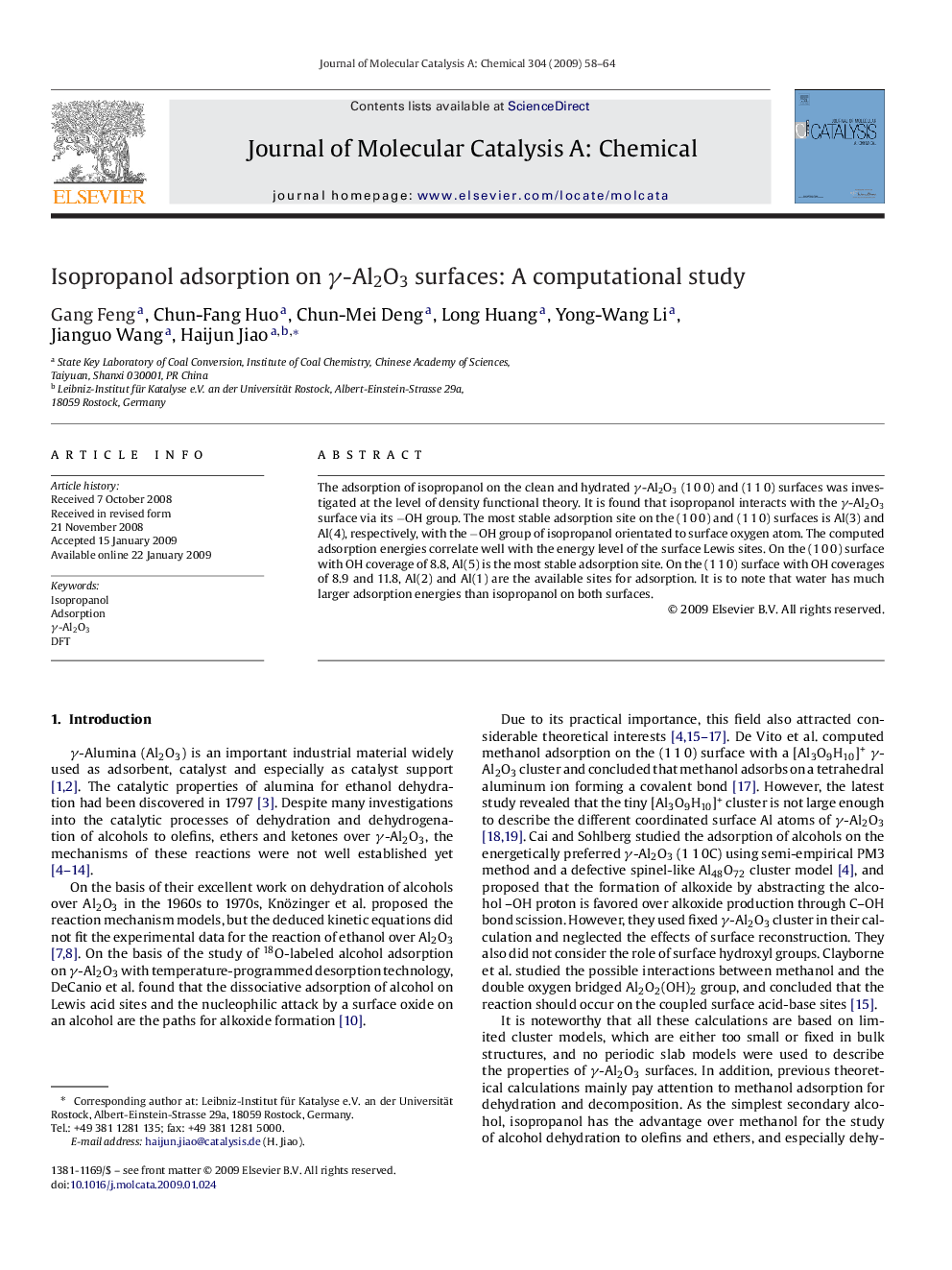| Article ID | Journal | Published Year | Pages | File Type |
|---|---|---|---|---|
| 67048 | Journal of Molecular Catalysis A: Chemical | 2009 | 7 Pages |
The adsorption of isopropanol on the clean and hydrated γ-Al2O3 (1 0 0) and (1 1 0) surfaces was investigated at the level of density functional theory. It is found that isopropanol interacts with the γ-Al2O3 surface via its −OH group. The most stable adsorption site on the (1 0 0) and (1 1 0) surfaces is Al(3) and Al(4), respectively, with the −OH group of isopropanol orientated to surface oxygen atom. The computed adsorption energies correlate well with the energy level of the surface Lewis sites. On the (1 0 0) surface with OH coverage of 8.8, Al(5) is the most stable adsorption site. On the (1 1 0) surface with OH coverages of 8.9 and 11.8, Al(2) and Al(1) are the available sites for adsorption. It is to note that water has much larger adsorption energies than isopropanol on both surfaces.
Graphical abstractFigure optionsDownload full-size imageDownload as PowerPoint slide
